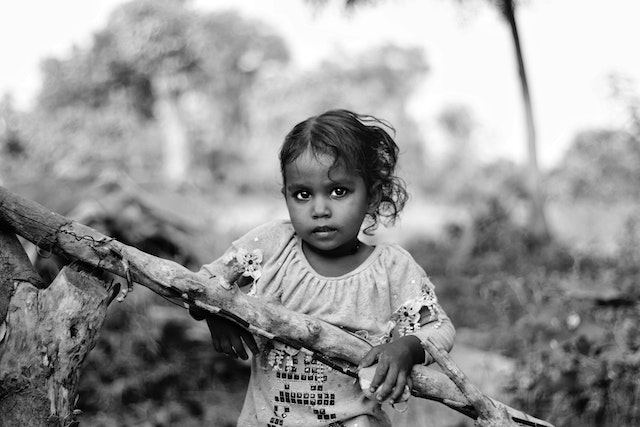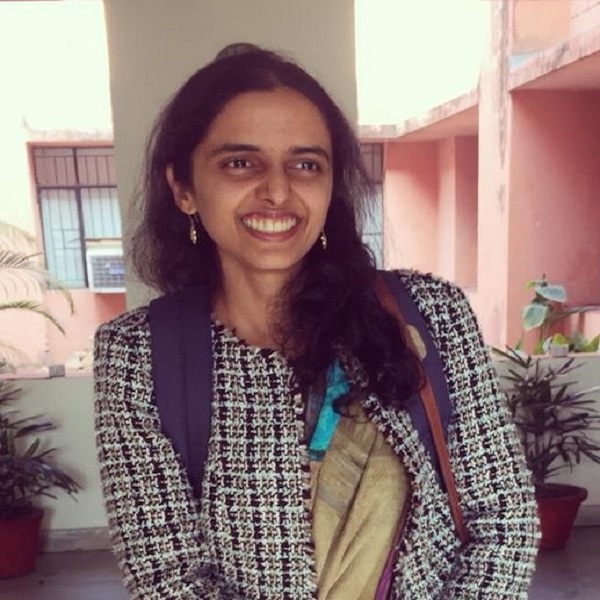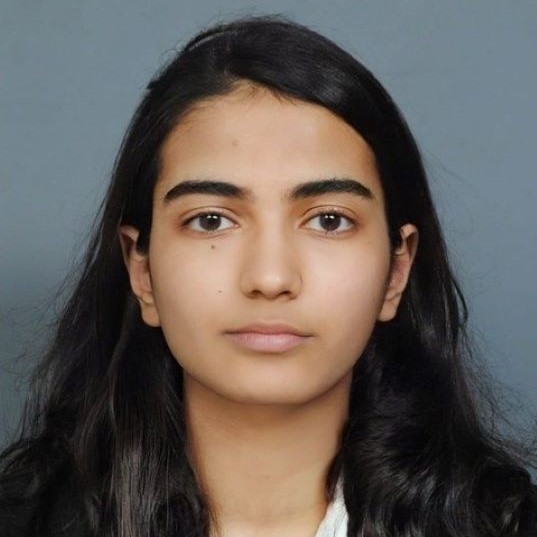
Vulnerable Children of Maharashtra
A report on the status of children orphaned by COVID-19
Introduction
At present, India has more than 1.5 lakh vulnerable children. These children have either been orphaned (due to COVID-19 or non-COVID-19 reasons), have lost a single parent, or have been abandoned during the COVID-19 pandemic. Maharashtra has the second highest number among states in India with approximately 20,429 vulnerable children. Specifically, when it comes to children who are orphaned during COVID-19, Maharashtra also ranks within the top five states of India. As of February 15, 2022, out of the nearly 10,386 children who lost their guardians during the COVID-19 pandemic, 718 children were based in Maharashtra.


Given the unprecedented nature of the COVID-19 pandemic and the hardships faced by people, Vidhi’s state office in Maharashtra decided to study governance responses to children – one amongst the many vulnerable groups. Since a majority of the schemes during the pandemic were created only for orphans who lost both parents or their surviving guardians to COVID-19 (and not due to socioeconomic circumstances caused by COVID-19), we analysed the implementation of support measures and schemes that were only targeted to such children. Specifically, the following schemes were studied:
- The COVID-19 ex-gratia compensation of INR 50,000 provided by the Maharashtra State Disaster Relief Fund to family members (including children) who lost their kin to COVID-19.
- The PM CARES for Children Scheme (“PM CARES Fund”) of INR 10,00,000 provided by the central government to all children who lost both or their surviving guardians to COVID-19.
- Additional grants of INR 5,00,000, in the form of a fixed deposit, provided by the state government to orphans.
- An additional grant of INR 10,000 for orphans provided by the Maharashtra government as ordered by the Supreme Court in October 2021.
Some schemes that existed before the pandemic and benefitted orphan children during the pandemic were also studied:
- A centrally sponsored scheme, the Integrated Child Protection Scheme (“ICPS”) that provides INR 2160 monthly per child to Child Care Institutions for care of each child.
- A scheme by the Maharashtra government, the Bal Sangopan scheme created in 2005 that provided INR 1250 to all families or extended families requiring sponsorship to take care of all children in need of care and protection, including orphans.
Researchers also conducted a survey of authorities and institutions under the Juvenile Justice (Care and Protection of Children Act), 2015 (“JJ Act”) to understand the implementation of this law in Maharashtra. Interviews were conducted for Child Welfare Committees (“CWCs”), District Child Protection Units (“DCPUs”) and Child Care Institutions (“CCIs”):
| Authorities and Institutions | Percentage/Number Interviewed |
| CWCs | 56% (22 out of 39) |
| DCPUs | 66% (24 out of 36) |
| CCIs | 20 out of approximately 450 |
Key Findings
Government intervention hindered by COVID-19 death certificate requirement
Despite the establishment of Task Forces in each district by the government to identify and rehabilitate orphans, there were discrepancies in providing benefits under a variety of schemes to such children as proof of COVID-19 mortality in the form of death certificates was required. Nearly half of the DCPUs, as well as news reports mentioned the difficulties faced in procuring certificates and documents for orphans.
An emphasis on children orphaned by COVID-19 disregards the needs of other vulnerable children
In a 2018 survey of CCIs conducted by the Ministry of Women and Child Development in 2018, it was noted that abandoned children and children of single parents, and not orphans, formed the highest demographic of children in need of care and protection. Even during the pandemic, this demographic remained the same.
While it is difficult to compare categories of vulnerable children to decide what financial assistance should be allocated to them, the provisions available to children who lost their primary caregiver during the pandemic appeared meagre in comparison to the financial assistance provided to children orphaned by COVID-19. The difference contradicts with the spirit of the JJ Act, which does not differentiate between different children in need of care and protection.
Implementation issues are systemic
DCPUs and CWCs stated that there were difficulties in coordination and on-ground implementation of the JJ Act caused due to problems of staffing, funding and training. These problems were systemic and existed even before the pandemic. A few of the CCIs interviewed shared that they have never received any grant money under the ICPS. This is because there is no mandatory requirement for the state to fund recognised CCIs. In fact, the 2018 survey of CCIs had also noted that only around 40% of the CCIs receive funding from the government.
Reduction in donations during the pandemic
CCIs also saw a decrease in donations during the pandemic. News reports as well as almost all CCIs interviewed stated their donations had reduced during the first wave of the pandemic. Only two CCIs mentioned an improvement in donations during the second wave.
Most CCIs also noted an increase in expenditure as they saw an increase in hospital bills and purchase of online teaching and learning material for children. This caused an additional strain on their resources.
Family based care preferred over institutional care
As of March 23, 2022, out of the 788 children orphaned by COVID-19 in Maharashtra, 33 children, that is only 4%, were placed in CCIs. **

While the JJ Act prioritises family-based care, decisions with respect to care of children are to be made on a case-to-case basis. Our study found that a significantly high number of children were sent to kinship care during the pandemic. This may signify an unnatural push to place children with their relatives which may not always be in the best interest of the child. This is particularly concerning in districts where Home Study Reports could not be conducted.
CWC and DCPU representatives interviewed believed that family care was better than CCIs as positive attention and attachments could only happen through individual care. Yet, our research shows that both institutional and home-based care are required because India still has several problems such as parents who are unable to feed and educate their children, or are in conflict with the law. They, place their children temporarily in CCIs for lack of other alternatives. Keeping these specific socio-economic conditions in mind, both kinds of care need to be bolstered.
Government schemes are important
DCPUs stated that for children whose documents had been verified, all schemes had been processed or provided. The earliest scheme to reach the children was the Bal Sangopan scheme. As for the COVID-19 schemes, if the required documentation was in place, none of the DCPUs mentioned any trouble with schemes.
A CWC member mentioned that the provisions of the PM CARES Fund assisted children in continuing their private schooling and in their placement at Kendra Vidyalayas. However, the member also mentioned that without assistance from the DCPU and the CWC, schools were not allowing children to continue their education. Therefore, more awareness and publicity of the government schemes was required.
A few CCIs provided counselling through hospitals and had external support but most provided mental health counselling through their staff itself. While specific schemes to provide mental health support to children orphaned during the pandemic had been created in collaboration with National Institute of Mental Health and Neuro Science and SAMVAD (Support, Advocacy & Mental health interventions for children in Vulnerable circumstances And Distress), the CCIs interviewed did not make a reference to these.
Foster care system was unused
Group foster care facilities – where NGOs offer community foster care for children – have been functioning from before. However, the foster care programme has only been in place since the past two years.Till date about 40 children across the state have been identified to be fostered. Some of these children are yet to be placed with their foster parents. Therefore, the foster care programme is at its nascent stages and did not intersect with children orphaned by COVID-19.
Conclusion
To ensure the safety of children in need of care and protection during high-risk periods such as that posed by the COVID-19 pandemic, we need to implement prevention and mitigation programmes. For preventive measures, the existing systems must be strengthened with proper training and funding aside and outside of a pandemic-like situation. Our research found that a lack of funding, coordination and staffing was not caused by the pandemic but was inherent in the system.
For mitigation processes and schemes, there was a consensus between authorities interviewed as well as people working in social organisations for child welfare that benefits offered to children orphaned by COVID-19 should be provided to all orphans from 2020. Additional financial benefits should be provided to children of single parents as well. Further, a categorisation discriminating between different orphans as well as other vulnerable children goes against the purpose of the JJ Act which extends the same provisions to all children in need of care and protection. While it is important to provide orphans with as much assistance as possible, the occurrence of a pandemic or a natural disaster cannot override the importance of providing all children with relevant and equal care and protection.
It is commendable that the government tracked and offered financial assistance to orphans with immediacy even during the pandemic. However, the schemes could have attempted to remedy a more systemic set of problems that were affecting child welfare rather than a blanket set of schemes that were offered only to children orphaned during the pandemic. Further areas of research, such as identifying bottlenecks in the system, especially in the processes for locating orphaned children, and designating children as legally free for adoption will be important to addressing these systemic challenges.
* From our experiences in the field, we understand there is a stigma attached to the word orphan. In our report we have used the term orphan in order to maintain its legal definition under the Juvenile Justice (Care and Protection of Children Act), 2015.
** Data by the Ministry of Women and Child Development as on February 15, 2022 provided that 718 children in Maharashtra had been orphaned during the pandemic (whether due to COVID-19 or otherwise). A later conversation with State Women and Child Development Commissionerate (Pune) dated March 23, 2022 provided that 788 children had been orphaned in Maharashtra due to COVID-19.

